Kumar Pratik
ReQuestNet: A Foundational Learning model for Channel Estimation
Aug 12, 2025Abstract:In this paper, we present a novel neural architecture for channel estimation (CE) in 5G and beyond, the Recurrent Equivariant UERS Estimation Network (ReQuestNet). It incorporates several practical considerations in wireless communication systems, such as ability to handle variable number of resource block (RB), dynamic number of transmit layers, physical resource block groups (PRGs) bundling size (BS), demodulation reference signal (DMRS) patterns with a single unified model, thereby, drastically simplifying the CE pipeline. Besides it addresses several limitations of the legacy linear MMSE solutions, for example, by being independent of other reference signals and particularly by jointly processing MIMO layers and differently precoded channels with unknown precoding at the receiver. ReQuestNet comprises of two sub-units, CoarseNet followed by RefinementNet. CoarseNet performs per PRG, per transmit-receive (Tx-Rx) stream channel estimation, while RefinementNet refines the CoarseNet channel estimate by incorporating correlations across differently precoded PRGs, and correlation across multiple input multiple output (MIMO) channel spatial dimensions (cross-MIMO). Simulation results demonstrate that ReQuestNet significantly outperforms genie minimum mean squared error (MMSE) CE across a wide range of channel conditions, delay-Doppler profiles, achieving up to 10dB gain at high SNRs. Notably, ReQuestNet generalizes effectively to unseen channel profiles, efficiently exploiting inter-PRG and cross-MIMO correlations under dynamic PRG BS and varying transmit layer allocations.
Local Look-Ahead Guidance via Verifier-in-the-Loop for Automated Theorem Proving
Mar 12, 2025Abstract:The most promising recent methods for AI reasoning require applying variants of reinforcement learning (RL) either on rolled out trajectories from the model, even for the step-wise rewards, or large quantities of human annotated trajectory data. The reliance on the rolled-out trajectory renders the compute cost and time prohibitively high. In particular, the correctness of a reasoning trajectory can typically only be judged at its completion, leading to sparse rewards in RL or requiring expensive synthetic data generation in expert iteration-like methods. In this work, we focus on the Automatic Theorem Proving (ATP) task and propose a novel verifier-in-the-loop design, which unlike existing approaches that leverage feedback on the entire reasoning trajectory, employs an automated verifier to give intermediate feedback at each step of the reasoning process. Using Lean as the verifier, we empirically show that the step-by-step local verification produces a global improvement in the model's reasoning accuracy and efficiency.
Neural Lattice Reduction: A Self-Supervised Geometric Deep Learning Approach
Nov 14, 2023Abstract:Lattice reduction is a combinatorial optimization problem aimed at finding the most orthogonal basis in a given lattice. In this work, we address lattice reduction via deep learning methods. We design a deep neural model outputting factorized unimodular matrices and train it in a self-supervised manner by penalizing non-orthogonal lattice bases. We incorporate the symmetries of lattice reduction into the model by making it invariant and equivariant with respect to appropriate continuous and discrete groups.
Equivariant Priors for Compressed Sensing with Unknown Orientation
Jun 28, 2022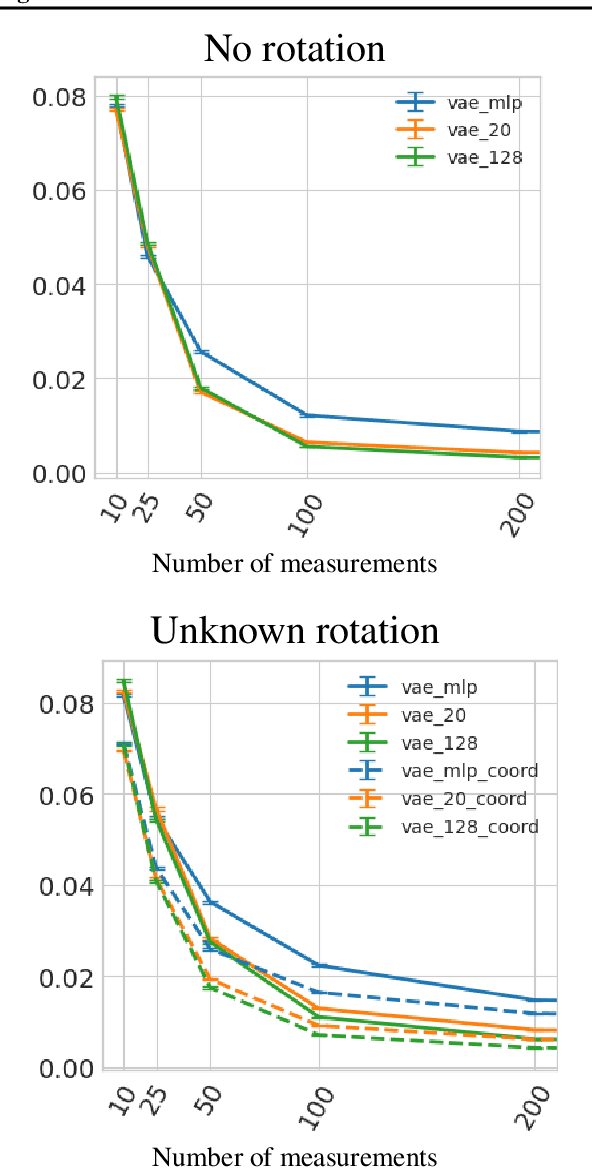
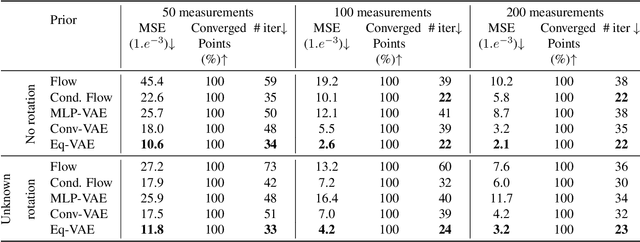
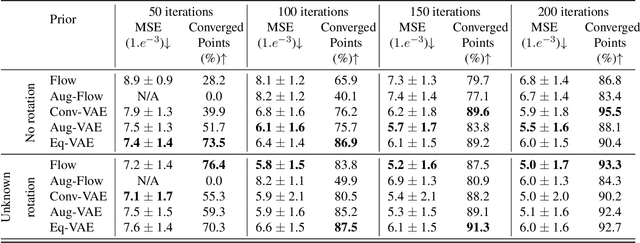

Abstract:In compressed sensing, the goal is to reconstruct the signal from an underdetermined system of linear measurements. Thus, prior knowledge about the signal of interest and its structure is required. Additionally, in many scenarios, the signal has an unknown orientation prior to measurements. To address such recovery problems, we propose using equivariant generative models as a prior, which encapsulate orientation information in their latent space. Thereby, we show that signals with unknown orientations can be recovered with iterative gradient descent on the latent space of these models and provide additional theoretical recovery guarantees. We construct an equivariant variational autoencoder and use the decoder as generative prior for compressed sensing. We discuss additional potential gains of the proposed approach in terms of convergence and latency.
Neural Augmentation of Kalman Filter with Hypernetwork for Channel Tracking
Sep 26, 2021
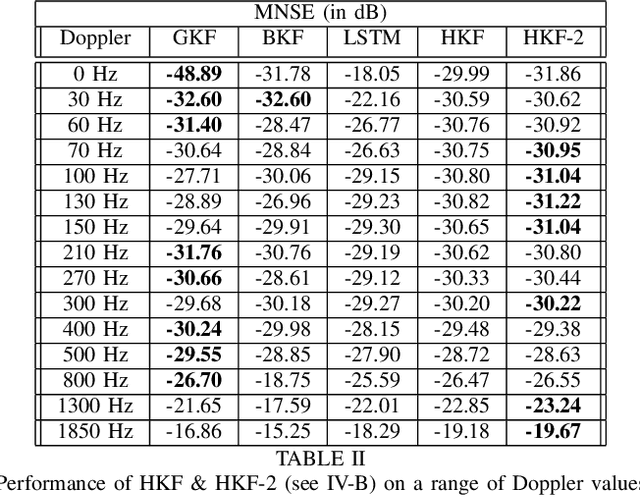
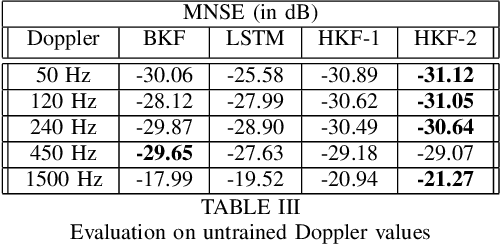
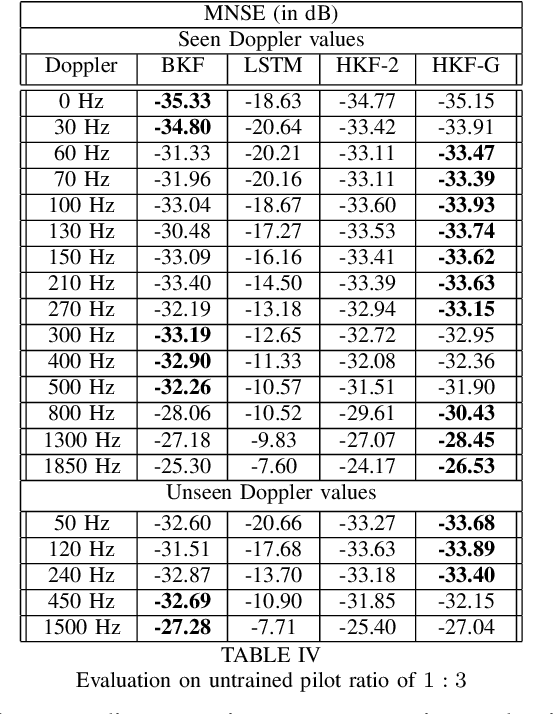
Abstract:We propose Hypernetwork Kalman Filter (HKF) for tracking applications with multiple different dynamics. The HKF combines generalization power of Kalman filters with expressive power of neural networks. Instead of keeping a bank of Kalman filters and choosing one based on approximating the actual dynamics, HKF adapts itself to each dynamics based on the observed sequence. Through extensive experiments on CDL-B channel model, we show that the HKF can be used for tracking the channel over a wide range of Doppler values, matching Kalman filter performance with genie Doppler information. At high Doppler values, it achieves around 2dB gain over genie Kalman filter. The HKF generalizes well to unseen Doppler, SNR values and pilot patterns unlike LSTM, which suffers from severe performance degradation.
RE-MIMO: Recurrent and Permutation Equivariant Neural MIMO Detection
Jun 30, 2020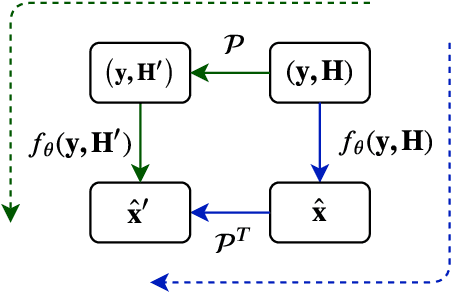


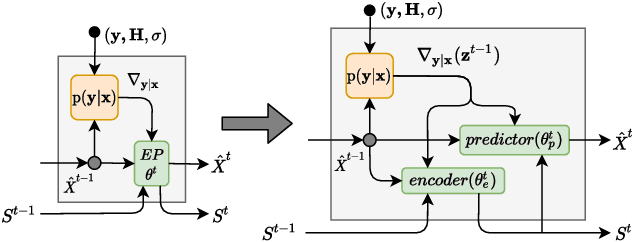
Abstract:In this paper, we present a novel neural network for MIMO symbol detection. It is motivated by several important considerations in wireless communication systems; permutation equivariance and a variable number of users. The neural detector learns an iterative decoding algorithm that is implemented as a stack of iterative units. Each iterative unit is a neural computation module comprising of 3 sub-modules: the likelihood module, the encoder module, and the predictor module. The likelihood module injects information about the generative (forward) process into the neural network. The encoder-predictor modules together update the state vector and symbol estimates. The encoder module updates the state vector and employs a transformer based attention network to handle the interactions among the users in a permutation equivariant manner. The predictor module refines the symbol estimates. The modular and permutation equivariant architecture allows for dealing with a varying number of users. The resulting neural detector architecture is unique and exhibits several desirable properties unseen in any of the previously proposed neural detectors. We compare its performance against existing methods and the results show the ability of our network to efficiently handle a variable number of transmitters with high accuracy.
 Add to Chrome
Add to Chrome Add to Firefox
Add to Firefox Add to Edge
Add to Edge